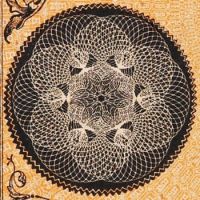Japanese banknotes are patterned with highly intricate, geometrical designs of a style known as guilloche, or saimon in Japanese. Guilloche was first introduced to Japan in the beginning of the 19th century. Its complexity not only produces aesthetically pleasing patterns, but it is also difficult to forge, which is why such patterns are used on banknotes as a security measure.
This exhibition focuses on both artistic and functional aspects of guilloche in Japan — its development in design and technology. Some of the saimon patterns on display are being shown to the public for the first time; till March 3.
Banknote and Postage Stamp Museum; (03) 5390-5194; 1-6-1 Oji, Kita-ku, Tokyo; Oji Station, Keihin Tohoku Line. 9:30 a.m.-5:00 p.m. Free admission. Closed Mon. (except Jan. 14, Feb. 11), Dec. 29-Jan.3, Jan. 15, 27, Feb. 12. www.npb.go.jp/ja/museum/index.html.



















With your current subscription plan you can comment on stories. However, before writing your first comment, please create a display name in the Profile section of your subscriber account page.